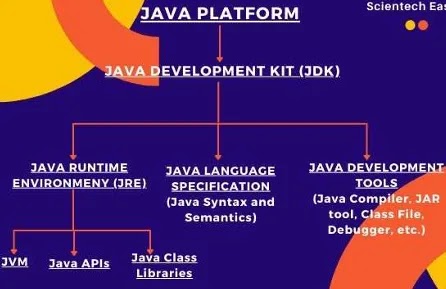Mastering Java: Key Concepts, Architecture, and Buzzwords Explained
Java Buzzwords - Core Characteristics You Should Know
Java stands out in programming for its unique set of features or "buzzwords" that make it a popular language across the globe. Let’s dive into what makes Java so special:
Simple - Java’s design keeps things easy. It follows similar syntax to C/C++ but skips complex things like pointers, structs, and typedefs. Plus, it’s got automatic garbage collection, meaning you don’t have to worry about managing memory.
Portable - Java programs can run anywhere that has a JVM (Java Virtual Machine). Thanks to bytecode (an intermediate form of the code), Java is "write once, run anywhere."
Object-Oriented (OO) - Java is all about objects and classes, which package data (attributes) and functions (methods). With its support for object-oriented principles like Abstraction, Encapsulation, Inheritance, and Polymorphism, Java structures programs in a way that’s clean and organized.
Robust - With Java, programs are stable and less prone to crashes. The language minimizes issues by eliminating pointers and automating garbage collection, plus it has strong error handling.
Architecture Neutral - Java bytecode can run on any system, no matter the OS or CPU. This makes it very flexible and easy to use across different setups.
Interpreted - Java compiles code to bytecode, not machine code, which the JVM can interpret and run on any system.
Distributed - Java has built-in support for networking and internet protocols (like HTTP and FTP), making it perfect for creating web applications.
Secure - Java is strict about security with no pointers (avoiding accidental memory access) and a bytecode verifier that ensures code safety.
Multithreaded - Java supports concurrent programming with built-in thread management, making it perfect for creating interactive applications.
Java Architecture - How It All Comes Together
Java’s structure combines interpretation and compilation, giving it versatility and reliability. Here’s a breakdown:
JDK (Java Development Kit) - This is the toolkit for building Java applications, including essential tools like
javac(compiler),java(launcher), andjavadoc(documentation). If you want to develop Java applications, you’ll need the JDK.JRE (Java Runtime Environment) - While JDK is for building applications, JRE is for running them. It includes the JVM (Java Virtual Machine) and essential libraries to execute Java programs. (JRE Explained Below)
Java API - A huge library of pre-built classes and interfaces that provide Java’s core functionality. Libraries come in packages, with popular ones including:
java.langfor core classes (e.g., Integer, String)java.utilfor utilities likeScannerjava.iofor file I/Ojava.sqlfor database handling
It combines the interpretation and compilation, and enumerates all of steps in writing a java program.
JRE
JRE bridges the gap between java applications and the underlying operating system, as it allows java programs to be executed on various platform “write once run anywhere”.
JRE takes bytecode and converts it into machine code, making it executable on the host system.
Breaking Down JDK vs. JRE
| JDK | JRE |
|---|---|
| Used for developing and debugging. | Used for executing programs |
| Contains JRE, compiler, and tools | Only the environment needed to run Java apps |
Java’s Execution Cycle
- Write the Code - Use a text editor to write the Java code.
- Compile - Run
javacto turn the code into bytecode. - Execute - Use the
javainterpreter to run the bytecode. - See the Output - Voila! Your program runs, and you see the result.
Java Data Types
Java has two types of data types:
- Primitive - Like
boolean,int,char,float. They directly store values in memory. - Non-Primitive (Reference) - These include
Array,Class, etc. They point to instances or objects in memory rather than directly storing values.
Fun fact: char in Java takes up 2 bytes of memory, and the default value for boolean is false.
Java Classes - Building Blocks of Java
A Java class is a blueprint for creating objects, which are instances of that class. Think of a class as a cookie cutter and objects as cookies.
- Instance Variables - Store the object’s state.
- Methods - Functions defining object behavior.
privatemethods can only be used within the class.
Constructors
Constructors initialize objects automatically when they’re created. Java provides a default constructor if you don’t define one, but custom (parameterized) constructors allow you to set values for instance variables on creation.
public class Car {
String model;
// Constructor
public Car(String modelName) {
model = modelName;
}
}
// Instantiation
Car myCar = new Car("Tesla");
Keywords - this and final
this- Refers to the current instance of a class, useful when you need to differentiate between class attributes and parameters.final- Marks a variable as unchangeable, meaning you can’t modify its value once set. It’s like saying, “Hands off!” Final can also apply to classes (no subclassing allowed) and methods (no overriding allowed)
Static Variables
static variables belong to the class, not individual instances. If you change a static variable in one object, that change is visible to all instances.
Java Inheritance - Reusing Code
Java allows one class to inherit properties and methods from another, using inheritance. This is a powerful way to create a hierarchy of classes where child classes can use and expand upon the functionality of parent classes. For example:







Comments
Post a Comment